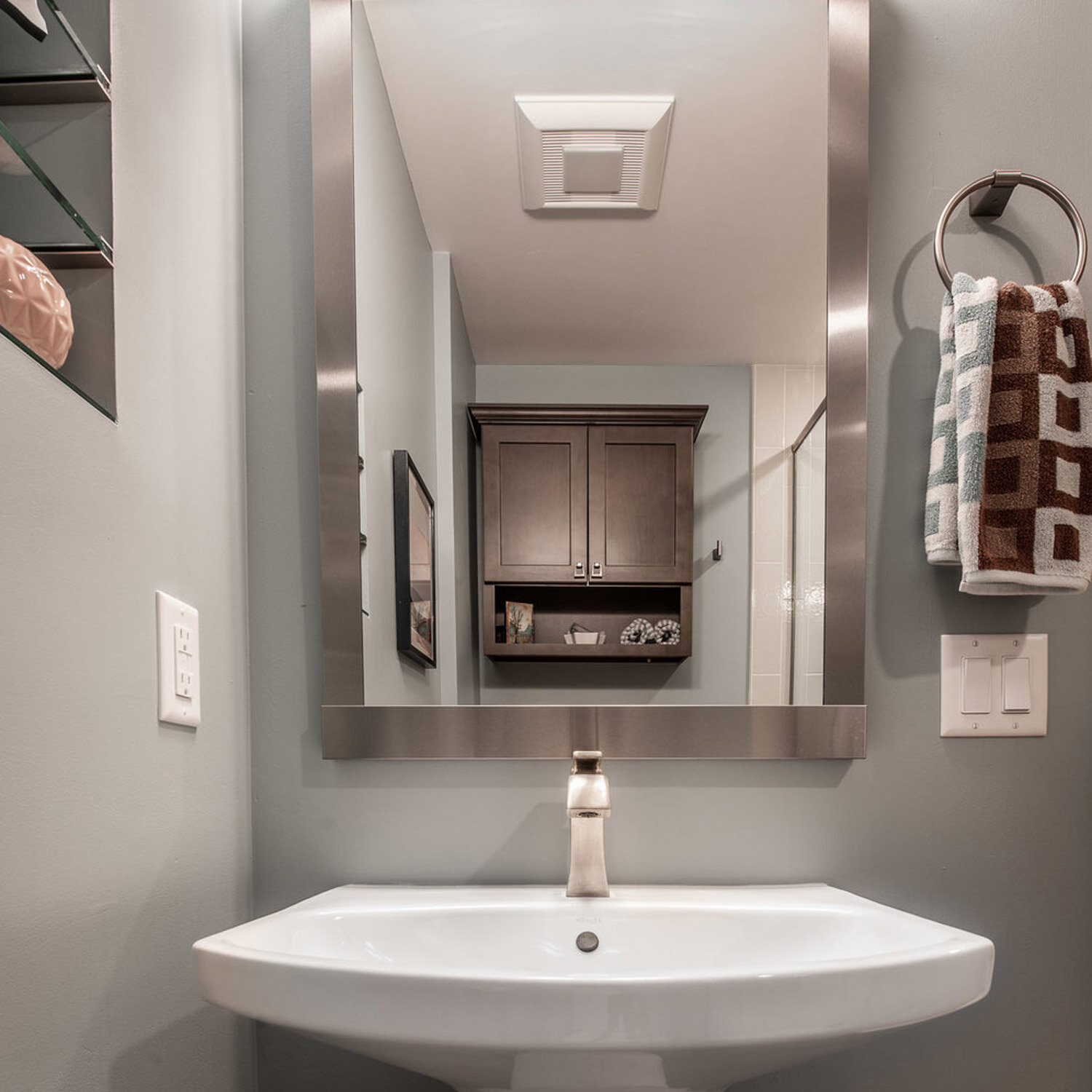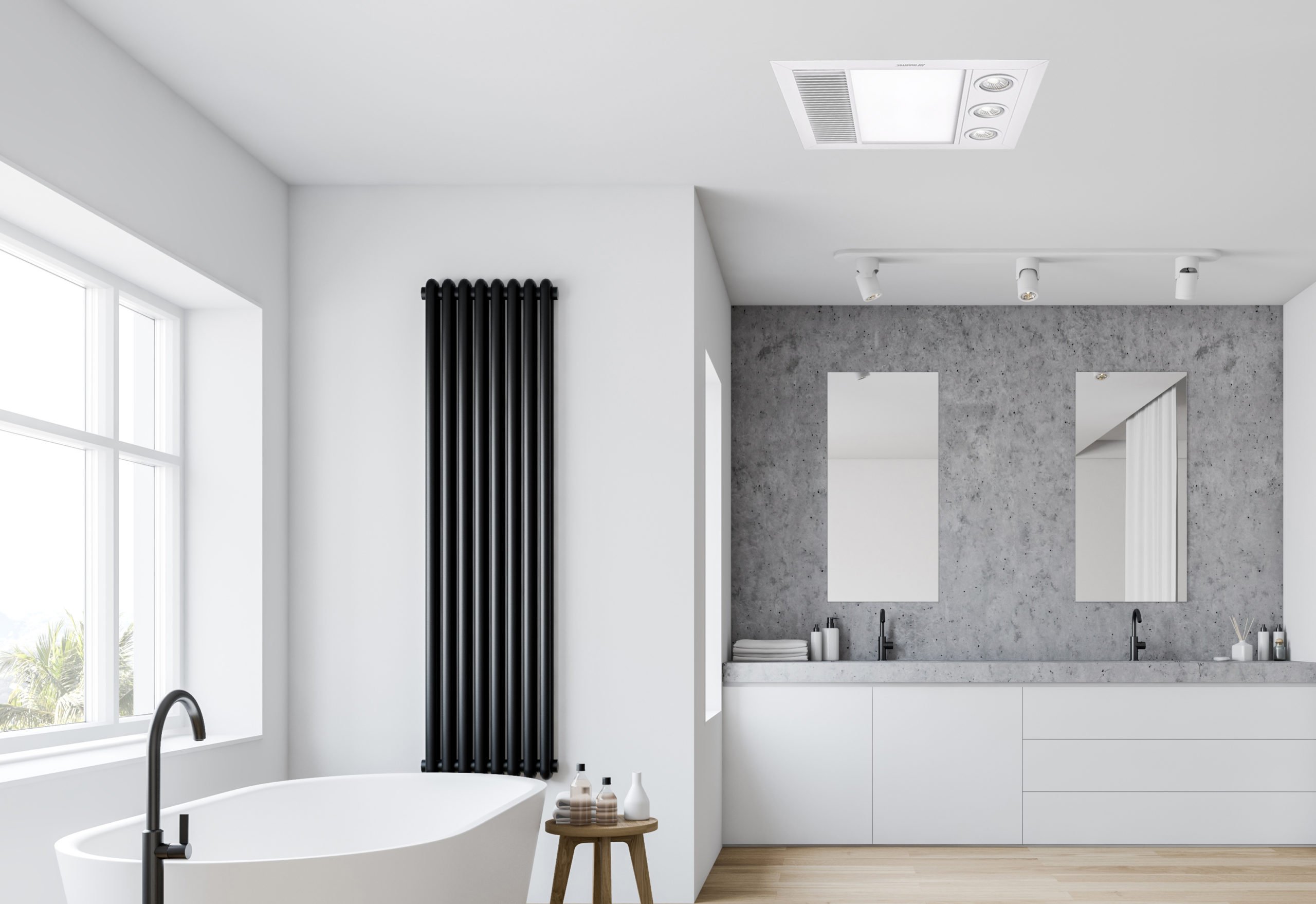Understanding Central Bathroom Exhaust Systems

Imagine this: you’re taking a luxurious bath, surrounded by steam, and suddenly, you realize you’re drowning in your own humidity. It’s not a pleasant experience, and that’s where a central bathroom exhaust system comes in. It’s the hero of your bathroom ventilation story, ensuring a fresh and dry environment, even after the most intense spa-like sessions.
The Purpose and Function of a Central Bathroom Exhaust System
A central bathroom exhaust system is a centralized ventilation system that removes moisture, odors, and pollutants from multiple bathrooms in a home. Think of it as a shared ventilation system, where everyone benefits from a fresh and dry bathroom environment. It’s like having a dedicated team of ventilation ninjas working tirelessly to keep your bathrooms comfortable and healthy.
Benefits of a Central Bathroom Exhaust System
Compared to individual bathroom fans, a central system offers several advantages:
- Increased Efficiency: One central system effectively ventilates multiple bathrooms, making it more efficient than installing individual fans in each bathroom. Imagine having one powerful ventilation engine instead of a fleet of tiny, inefficient fans. It’s like having a high-performance sports car versus a bunch of sputtering mopeds.
- Quieter Operation: Central systems typically have a quieter operation than individual fans, creating a more peaceful and relaxing bathroom experience. It’s like having a gentle breeze instead of a noisy windstorm in your bathroom.
- Improved Aesthetics: A central system eliminates the need for multiple individual fans, creating a cleaner and more aesthetically pleasing bathroom environment. Imagine a bathroom free from the clutter of multiple fans, creating a more streamlined and elegant look.
- Reduced Energy Consumption: Central systems can be designed to operate more efficiently, potentially reducing energy consumption compared to multiple individual fans. It’s like having a green thumb for your bathroom, reducing your carbon footprint and saving you money on energy bills.
Key Components of a Central Bathroom Exhaust System
A central bathroom exhaust system typically includes:
- Exhaust Fan: The powerhouse of the system, responsible for drawing air from the bathrooms and expelling it outdoors. It’s the heart of the system, ensuring efficient and effective ventilation.
- Ductwork: A network of pipes that connect the exhaust fan to each bathroom. It’s the circulatory system of the system, delivering the ventilation power to each bathroom.
- Vents: Openings in the ceilings of each bathroom that connect to the ductwork. It’s the entry point for the ventilation, allowing fresh air to flow in and stale air to flow out.
- Control System: A mechanism that allows you to control the operation of the system, including turning it on and off, adjusting fan speed, and setting timers. It’s the command center of the system, giving you full control over your bathroom ventilation.
Types of Central Bathroom Exhaust Systems
There are different types of central bathroom exhaust systems available, each with its own advantages and disadvantages:
- Whole-House Exhaust System: This system is designed to ventilate the entire house, including all bathrooms. It’s like having a comprehensive ventilation system for your entire home, ensuring fresh air circulation throughout.
- Dedicated Bathroom Exhaust System: This system is specifically designed for bathroom ventilation, with a separate exhaust fan and ductwork for each bathroom. It’s like having a personalized ventilation system for each bathroom, providing targeted ventilation.
- Combination System: This system combines elements of whole-house and dedicated bathroom exhaust systems, providing both whole-house ventilation and dedicated bathroom ventilation. It’s like having the best of both worlds, ensuring comprehensive ventilation for your home and targeted ventilation for your bathrooms.
Installation and Maintenance of Central Bathroom Exhaust Systems

Installing and maintaining a central bathroom exhaust system can be a bit like assembling a complex jigsaw puzzle. But fear not, dear reader, with a little know-how and a dash of humor, you can conquer this challenge!
Selecting the Right Exhaust Fan
Choosing the right exhaust fan is like finding the perfect pair of shoes – you need the right fit for your bathroom. The size and type of fan you choose will depend on the size of your bathroom and the amount of moisture it generates.
- Size Matters: A general rule of thumb is to choose a fan with a cubic feet per minute (CFM) rating equal to the volume of your bathroom. For example, a 100-square-foot bathroom with an 8-foot ceiling would require a fan with a CFM rating of 800 (100 x 8 = 800). Don’t be a miser with the CFM, go for a slightly larger fan if you have a large family or frequent showers.
- Types of Fans: There are various types of fans available, each with its own strengths.
- Inline fans are powerful and compact, perfect for tight spaces. They are often used in central bathroom exhaust systems.
- Centrifugal fans are a bit louder but are ideal for large bathrooms. They can move a greater volume of air.
- Axial fans are a good option for smaller bathrooms. They are quieter than centrifugal fans but less powerful.
Installing a Central Bathroom Exhaust System
Installing a central bathroom exhaust system is a bit like building a miniature air duct network. But fear not, with the right tools and a little patience, you can handle it like a pro.
- Planning is Key: Before you start drilling and cutting, it’s crucial to plan the layout of your system. Determine the location of the exhaust fan, the size and routing of the ductwork, and the location of the vent outlet on the roof or exterior wall.
- Choosing the Right Ductwork: The type of ductwork you choose will depend on the size of your system and the distance the air needs to travel.
- Rigid ductwork is the most common type used for central bathroom exhaust systems. It’s durable and provides excellent airflow.
- Flexible ductwork is a good option for tight spaces, but it can restrict airflow and be more prone to leaks.
- Installing the Exhaust Fan: The exhaust fan should be installed in a location that allows for easy access for maintenance. Secure the fan to the ceiling or wall using appropriate mounting brackets.
- Connecting the Ductwork: Connect the ductwork to the exhaust fan and run it to the vent outlet. Use duct tape to seal all connections and ensure a tight fit.
- Vent Outlet Installation: Install the vent outlet on the roof or exterior wall. Ensure that the vent outlet is at least 10 feet away from any windows or doors.
- Testing the System: Once the system is installed, test it by running the fan and checking for leaks. Make sure the fan is working properly and that air is being vented effectively.
Maintaining Your Central Bathroom Exhaust System
Maintaining your central bathroom exhaust system is like keeping your car in tip-top shape – it’s essential for optimal performance and longevity.
- Regular Cleaning: Clean the exhaust fan and vent outlet regularly to prevent buildup of dust, dirt, and moisture. This can be done with a vacuum cleaner or a damp cloth.
- Inspecting for Leaks: Inspect the ductwork for leaks regularly, especially in areas that are prone to moisture. Use a flashlight or a smoke test to check for leaks.
- Lubricating the Fan Motor: Lubricate the fan motor periodically to ensure smooth operation. Follow the manufacturer’s instructions for lubrication.
- Replacing the Filter: If your exhaust fan has a filter, replace it regularly according to the manufacturer’s recommendations. A dirty filter can restrict airflow and reduce the efficiency of the fan.
Troubleshooting and Repair of Central Bathroom Exhaust Systems

You’ve got a central bathroom exhaust system, a marvel of modern plumbing, but like any machine, it can sometimes develop hiccups. Don’t fret! This section will equip you with the knowledge to troubleshoot and repair common issues, saving you from the dreaded bathroom “fog” and keeping your home smelling fresh as a daisy.
Identifying Common Problems
When your central bathroom exhaust system starts acting up, it’s crucial to identify the root of the problem. This will help you determine the appropriate course of action, whether it’s a quick fix or a call for professional help.
Here’s a list of common issues:
- The fan doesn’t turn on: This could be a simple electrical issue, a faulty switch, or a blown fuse.
- The fan runs but doesn’t exhaust properly: This might indicate a clogged duct, a broken fan blade, or a malfunctioning motor.
- The fan makes strange noises: A grinding or rattling sound could signal a worn-out motor or loose parts.
- The fan runs constantly: This might be a sign of a faulty switch or a problem with the timer mechanism.
Troubleshooting Steps
Once you’ve identified the problem, it’s time to get your detective hat on and start troubleshooting. Remember, safety first! Always disconnect the power to the exhaust system before working on it.
Here’s a breakdown of common troubleshooting steps:
- Check the power supply: Make sure the circuit breaker is switched on and the fuse is intact.
- Inspect the switch: Check if the switch is working properly. If it’s a push-button switch, make sure the button is depressed fully.
- Examine the fan blades: Ensure the blades are clean and free of obstructions.
- Inspect the ductwork: Look for any visible blockages or damage to the ductwork.
- Test the motor: If the fan isn’t running, you can test the motor with a multimeter.
Repairing Faulty Components, Central bathroom exhaust system
If you’ve identified a faulty component, you might be able to repair or replace it yourself. But remember, working with electricity can be dangerous, so proceed with caution. If you’re not comfortable with electrical work, it’s best to call a qualified electrician.
Here’s a guide to repairing or replacing common components:
- Replacing a faulty switch: This is a relatively simple task, but it’s important to ensure you’re working with the correct voltage and that the new switch is compatible with your existing wiring.
- Replacing a blown fuse: This is a quick and easy fix, but make sure you use the correct amperage fuse.
- Cleaning the fan blades: This is a simple maintenance task that can improve the performance of your exhaust system. Use a soft brush or vacuum cleaner to remove dust and debris.
- Replacing a fan motor: This is a more complex task that requires some electrical knowledge. If you’re not comfortable with this type of work, it’s best to call a qualified electrician.
Importance of Professional Assistance
While some repairs can be tackled by a handy homeowner, it’s essential to know when to call in the professionals. Complex issues like motor replacements, ductwork repairs, or electrical problems are best left to qualified technicians.
Here’s why:
- Safety: Working with electricity can be dangerous, and a professional electrician can ensure the job is done safely and correctly.
- Expertise: A professional electrician has the knowledge and experience to diagnose and repair complex electrical problems.
- Warranty: If you have a professional repair your exhaust system, you’ll likely have a warranty on the work, giving you peace of mind.
